*NURSING > EXAM > NR569 Final Exam (100 out of 100) Questions and Answers (Latest Update) (100% Guaranteed Pass) (All)
NR569 Final Exam (100 out of 100) Questions and Answers (Latest Update) (100% Guaranteed Pass)
Document Content and Description Below
NR569 Final Exam (100 out of 100) Questions and Answers (Latest Update) (100% Guaranteed Pass language is a _____ hemisphere dominant function in ___% of right handed people, and _______% of left h... anded people - left - 97% - 60-70% broca's area is responsible for _________. It s located in the ________ lobe, and is associated with Brodmann area(s) _______ - speech production - L frontal - 44 and 45 wernicke's area is responsible for _________. It s located in the ________ lobe, and is associated with Brodmann area(s) _______ - speech comprehension - L temporal lobe - 22 speech comprehension (sensory) connects to speech production (motor) via the _________, which is a bundle of _________ - arcuate fasciculus - white matter tract what type of aphasia occurs when the arcuate fasciculus has a lesion? conduction aphasia aphasia syndromes that diminish or abolish the ability to comprehend and/or produce language as a vehicle for communicating meaningful statements broca's aphasia speech characteristics (3): - comprehension is intact/impaired 1) labored, slowed speech, impaired articulation, lacking normal intonation 2) cannot complete complex sentences 3) speech lacks grammatical structure but grammatical judgments intact - comprehension is intact wernicke's aphasia speech characteristics (2): - comprehension is intact/impaired 1) effortless, melodic speech produced at normal rate 2) content unintelligible with frequent errors - comprehension is impaired conduction aphasia characteristics (5) - some components of both Broca's and Wernicke's aphasia - comprehension of simple sentences - production intelligible speech - cannot repeat sentences verbatim - cannot assemble sounds effectively T/F: broca's and wernicke's aphasia affect writing true T/F: language processing involves motor cortex true - e.g.: the language circuitry for the word "kick" wold preferentially activate sensorimotor circuitry involved in performing leg-related actions cortical activation during movement vs. passive reading of action words during movement, get activity in tongue, finger, and foot areas when asked to move during reading, get similar activity in tongue, finger, foot areas of motor cortex ("lick" "pick" "kick") what happens if you apply HF-rTMS to area of the motor cortex that correspond to a body part (e.g.: arm; leg) decreased response time for word recognition e.g. TMS stimulates L motor cortex leg area --> faster recognition of "kick" left hemisphere functions - lexical and syntactic language - writing - speech (writing and speech are motor) right hemisphere functions - emotional coloring of language - spatial abilities - rudimentary speech sensory lesion to R parietal cortex results in what? does this same phenomenon occur with a L parietal lesion? L hemi-neglect no (orienting attention is a R hemisphere function, resulting in L neglect only) "orienting" attention is a ____ hemisphere function while "motor" attention is a ____ term-16hemisphere function right left T/F: split-brain individuals cannot articulate the perception of objects in the left visual field true - L visual field encoded in R visual cortex, but articulation is L brain function - "signal" from R cannot cross hemispheres (split brain) to reach L broca's area almost all of visual space is encoded in what cortex? right parietal cortex in what situation might a person present with some degree of R hemi-neglect bilateral lesion bisiach and luzzatti experiment: duomo in split brain individuals pts only remembered locations to the right of the duomo (when standing in front), but could remember the things on the left of the duomo only if facing the opposite direction (so the memory would be in their right visual field) in one study, RTMS (repetitive transcranial magnetic stimulation) was used to interfere w/brain fx. - When applied to R parietal cortex it affected _________ - When applied to L parietal cortex it affected _________ reaction time to an "orienting attention" task reaction time to a "motor attention" task (regardless of whether using R or L hand) some pelvic pain pts improve over time and others don't, how do we predict this via neuroimaging at baseline? improvers have stronger functional connectivity in LEFT fronto-parietal attention network "motor/internal attention" *may indicate a better ability to regulate attention to symptoms memory information in the nervous system available for future use learning process by which new memories are stored declarative memories explicit, episodic, semantic nondeclarative memories implicit, motor skills, associations, puzzle skills long term memory is most easily acquired if the stimuli are _____ highly salient the salience network includes these structures: (3), which collaborate to ________ insula, cingulate, thalamus; evaluate relevance of stimuli brain networks for learning are ______ except declarative memories, which is localized to the _____. widely distributed hippocampus dorsolateral prefrontal cortex neurons and direction specificity (experiment) different neurons fire when a stimulus occurs in the preferred direction continues to fire during the delay to keep in working memory (keeps direction in working memory to then perform a saccade in that direction) patient HM: procedure and its effects B medial temporal lobes removed due to seizures resultant anterograde amnesia: not able to lay down new declarative memories following surgery T/F: patient HM could form new non-declarative memories after surgery true hippocampus is the brain area associated with _________. It is able to serve this purpose because _________ formation of new declarative memories and spatial navigation it is the area of the brain the remains open to plasticity the longest into adulthood (benefit to be able to remember locations of food, communicate etc) memory circuit in hippocampus (5) input: perforant pathway from entorhinal cx synapse on granule cell in dentate gyrus granule cell synapses on CA3 cell CA3 synapses on CA1 cell (CA3 projection to CA1=schaffer collateral) CA1 synapses on neurons in subiculum (then to cortex) LTP in CA1 neurons of the hippocampus show cooperativity, associativity, and synapse specificity place cells in the hippocampus (rat experiment) cells that fire in specific "places" - these encode where the animal is in space what happens to localization ability in rats if you eliminate NMDA receptors on CA1 neurons reduced spatial learning: lack of ability to locate pedestal in water tank after multiple trials site of short term declarative info storage hippocampus LF TMS is excitatory or inhibitory? inhibitory variable practice enhances retention of motor skill relative to constant practice, due to mediation by what area? dorsolateral prefrontal cortex constant practice enhances short term performance of motor tasks, and this depends on what area? M1 non-declarative memory probably involves changes in synaptic strength within _____ circuitry, like the _____ sensorimotor DLPFC the avg adult human sleeps ____ hrs/night 7.5 the amount of sleep/night ____ with age decreases the period of the circadian cycle in humans is _____, resulting in sleep undergoing a ____ phase shift without environmental cues 26hrs forward two things that dictate sleep pattern circadian rhythm sleep deficit sleep deficit a shortage of sleep begins as soon as you wake up peaks around typical bedtime and triggers sleep to occur sleep deprivation sleep deficit continues to increase (e.g. all-nighter) where there is the largest sleep deficit is the time you are most likely to sleep EEG non-invasively records electrical activity on the scalp surface reflects activity in cortical pyramidal cells poor spatial resolution, good temporal resolution different stages of sleep REM stage 1 stage 2/3 stage 4 stage 4 sleep deepest stage of sleep lowest frequency, largest amplitude EEG happens early in sleep cycle REM sleep rapid eye movement sleep recurring sleep stage during which vivid dreams commonly occur punctuated by stage 2/3 sleep occurs 4-5x/night T/F: preventing non-REM sleep is fatal true (e.g. fatal familial insomnia or rat experiment where body weight drops with increasing food intake) slow-wave (non-REM) sleep is critical for the _____ aspects of sleep restorative T/F: neural activity sequences experienced during the day are re-activated during slow-wave sleep true (both in hippocampus and cortex) memory task, sleep, odor experiment memory task performed with and without odor odor given again during sleep retention was best when odor give initially (learning) and given while sleeping what areas are active during sleep with odorant present (after memory task) hippocampus cingulate precuneus sleep function and memory slow wave sleep sets up interactions between cortex, hippocampus, and thalamus consistent with experiences during the day REM is a period of increased synaptic plasticity to consolidate memory chemical modulators of sleep retinal ganglion cells activate hypothalamus (light cues) activation of autonomic NS activation of pineal gland pineal releases melatonin melatonin release peaks when? when is it lowest? why? early AM lowest during the day: outdoor light inhibits release during sleep how are LMNs inhibited? why does this occur? glycine is released by brainstem centers, which inhibits a-MN in spinal cord cortical areas are active during sleep (need for memory consolidation and LTP) but we don't want motor action to occur during sleep slow wave sleep results in muscle ____, while REM results in full _____ weakness paralysis narcolepsy with cataplexy emotional stimuli produced immediate REM sleep with paralysis idea that surprising (e.g. funny) things are worth storing in memory; so sleep is immediately triggered to consolidate the memory in "normal" individuals, this urge to sleep is able to be suppressed what chemical modulators are deficient in those with narcolepsy? hypothalamic deficiency in neurons that produce hypocretin hypocretin promotes wakefulness, esp when triggered by emotional events why does cataplexy (muscle paralysis) occur in narcolepsy with cataplexy? immediate entry into REM causes paralysis bottom-up processing attention driven by sensory input top-down processing prefrontal cortex plays dominant role in attention T/F: the size of prefrontal cortex is correlated with ability to perform top-down processing true what two neurotransmitters signal systemic states of stress? noradrenaline dopamine frontal lobe function personality and planning behavior connections that would have been most likely affected in phinneas gage L prefrontal cortex and amygdala connections motor planning definition: deciding a course of action to achieve a goal by considering possible future actions before they actually happen - requires looking ahead while holding goal info in working memory frontal lesions result in what deficit of motor planning? failure to achieve goal-oriented behavior through a series of simple actions common experimental tests of prefrontal cortex function tower of hanoi wisconsin card sort wisconsin card sort: frontal lobe lesions lead to what presentation? why does this occur? patients perseverate, utilizing initial rule over and over despite negative feedback working memory must be used in this task to retain knowledge of prev responses and prev feedback delayed response task (test of working memory): prefrontal lesions result in what presentation? why does this occur? monkey sees experimenter put food in well > delay - monkeys with lateral prefrontal lesions perform poorly, but still remember there is food in one well (not a complete short term memory deficit) - demands ability to hold a representation of the location of food during the delay period (working memory) effect of stress on prefrontal cortex in non-stressed situations, PFC is in control (top-down) in stressed situations, amygdala in control (bottom-up) what happens to the "directionality" of neurons in prefrontal cortex neurons in the state of stress lose directional specific firing of neurons involved in working memory lose specificity (this also occurs in highly fatigued states) depends on the levels of NA and DA T/F: chronic stress makes the brain "act" in a more bottom-up processing manner true affect/emotion are a read out of what? physiological processes widely distributed in the body stress activates the HPA axis to enhance fight/flight response in those with genetic predispositions, stress alters the prefrontal cortex readout of physiological processes chronic stress effect at the cellular level results in maladaptive synaptic plasticity or less effective synapses in the prefrontal cortex ketamine and depression 1) use 2) mechanism 3) can improve effectiveness of: 1) rapid acting agent for severe depression 2) blocks NMDA receptors on inhibitory interneurons releasing GABA --> result is increased glutamate release and other synaptic plasticity improvements that temporarily re-engages synaptic maintenance mechanisms 3) can improve effectiveness of long-term agents rTMS and depression there exists some functional connectivity of certain regions correlated with different aspects of depression (anhedonic vs. anxious subtypes) patients are able to be clustered according to functional connectivity cluster 1 was most responsive to HF-rTMS to L DLPFC [Show More]
Last updated: 1 year ago
Preview 4 out of 19 pages

Loading document previews ...
Buy this document to get the full access instantly
Instant Download Access after purchase
Buy NowInstant download
We Accept:

Also available in bundle (1)
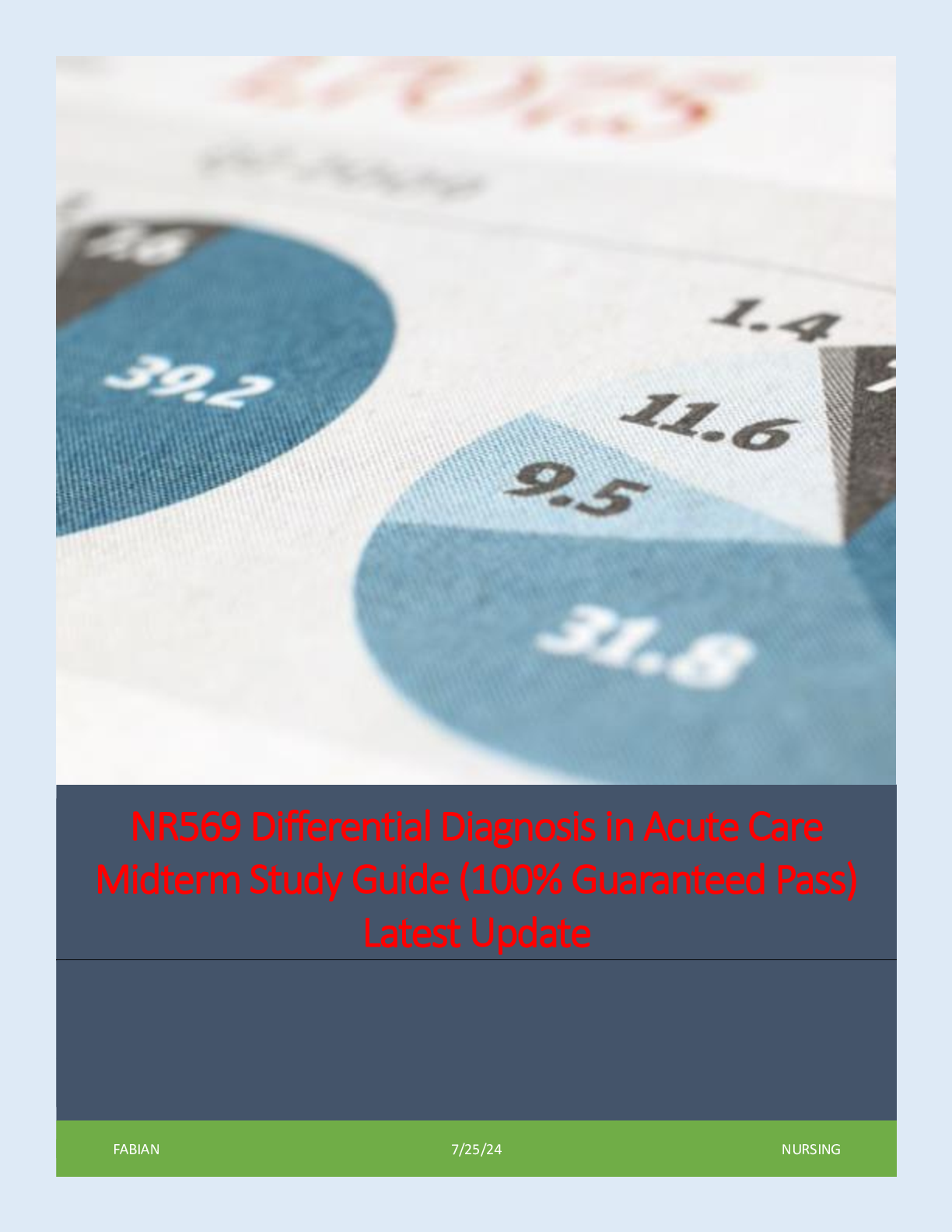
NR569 Midterm Exam and Final Exam Package Deal (LATEST UPDATE) Questions and Answers (100% Guaranteed Pass)
NR569 Midterm Exam and Final Exam Package Deal (LATEST UPDATE) Questions and Answers (100% Guaranteed Pass)
By Prof. Goodluck 1 year ago
$19
3
Reviews( 0 )
$12.50
Can't find what you want? Try our AI powered Search
Document information
Connected school, study & course
About the document
Uploaded On
Jul 25, 2024
Number of pages
19
Written in
Additional information
This document has been written for:
Uploaded
Jul 25, 2024
Downloads
0
Views
97

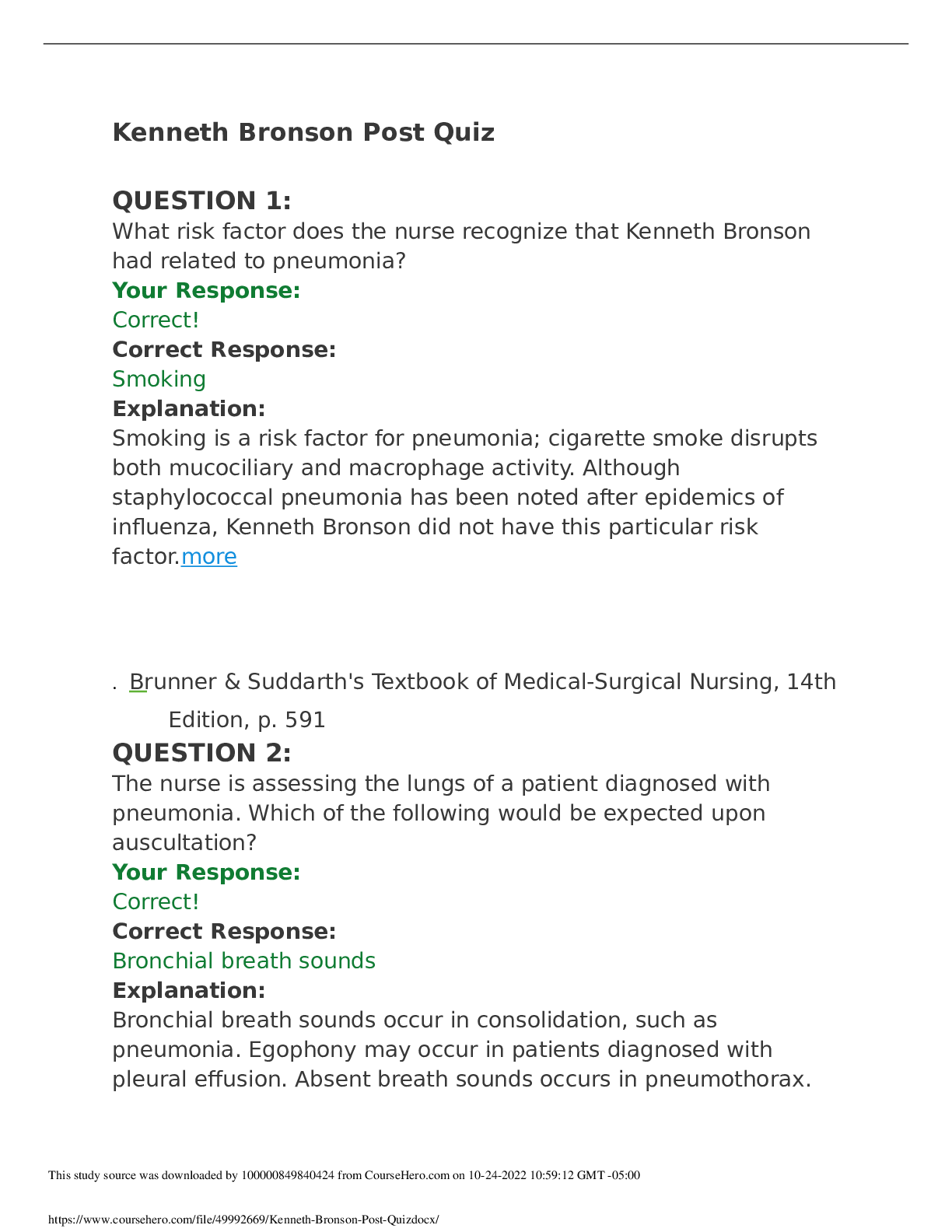

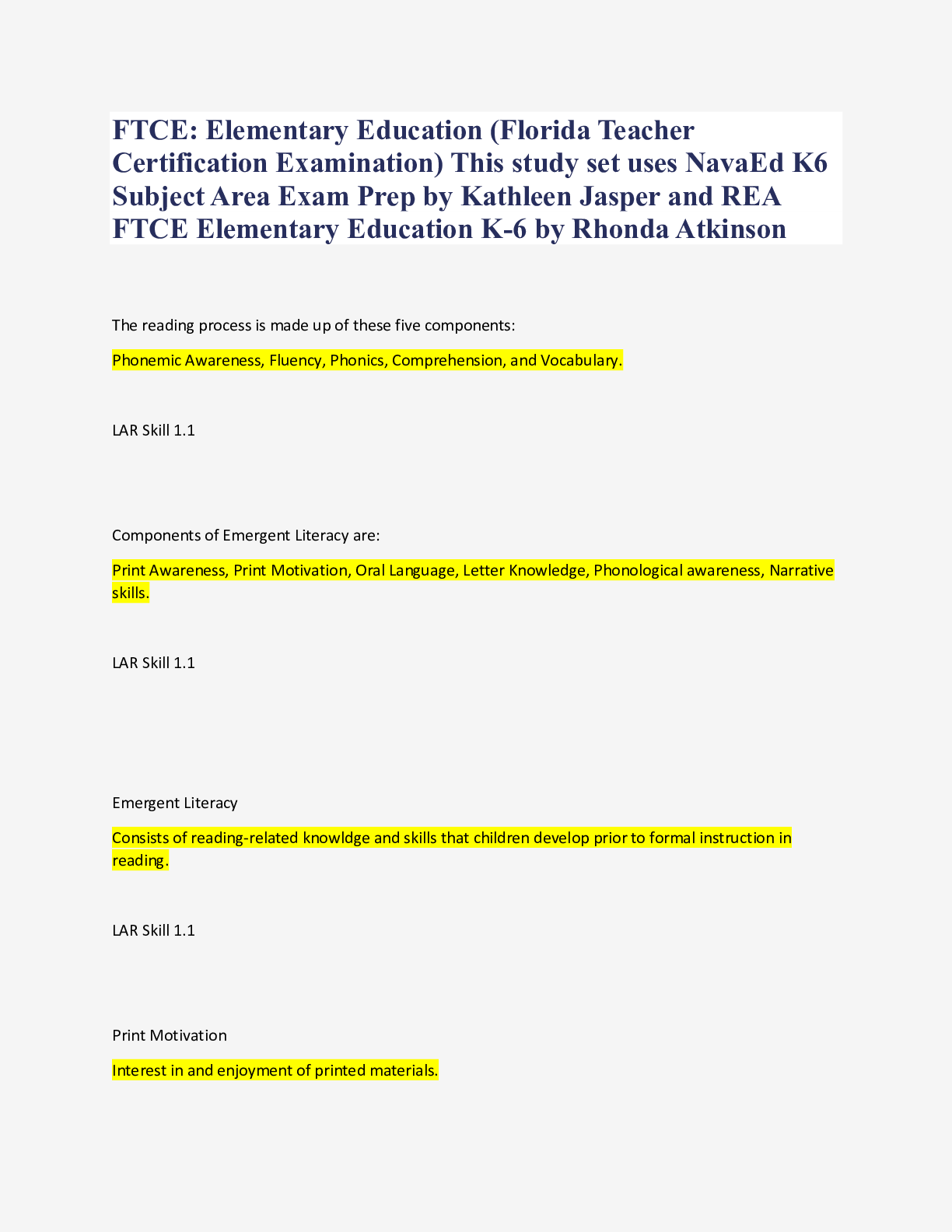

 Questions and Answers 100% VERIFIED.png)
 Questions and Answers 100% correct Solutions.png)



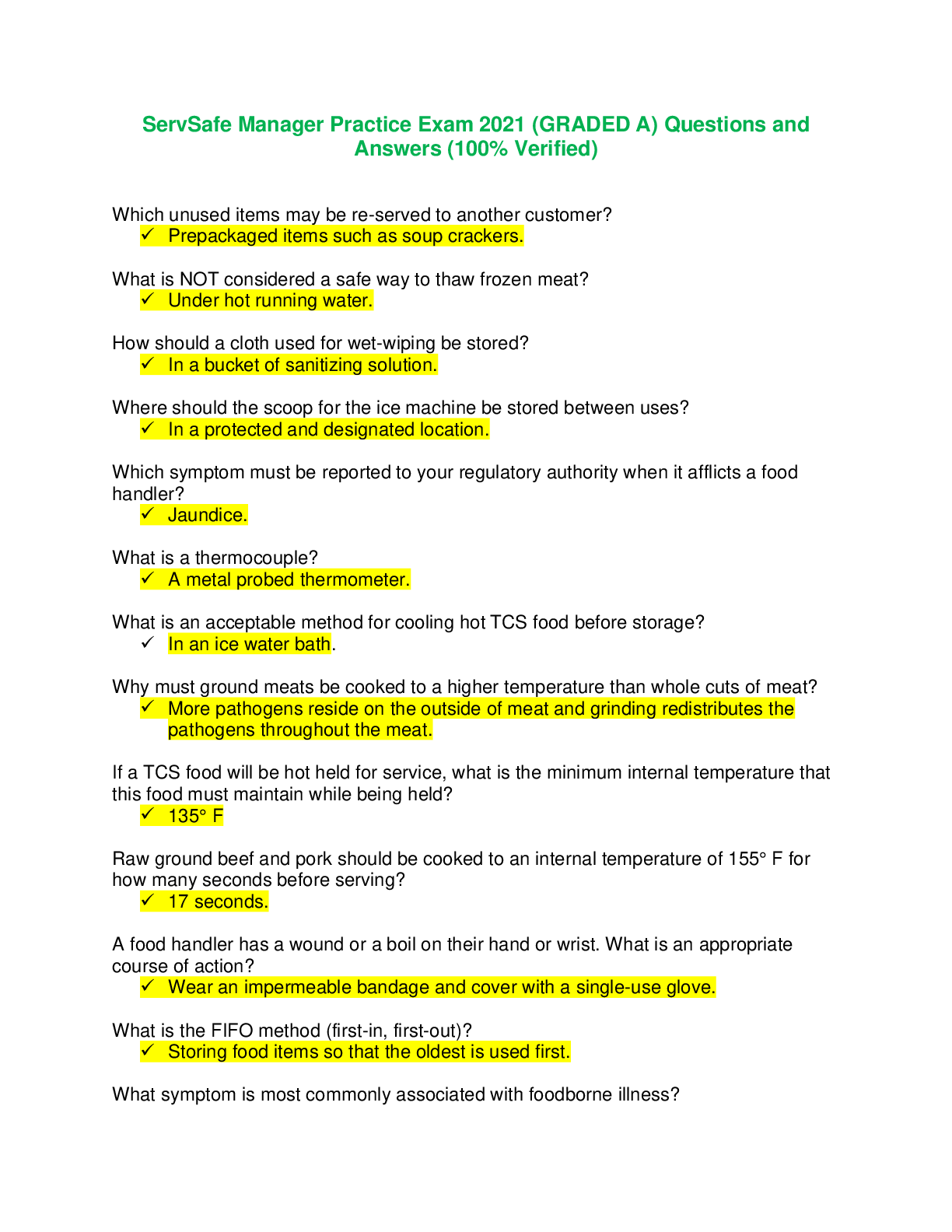


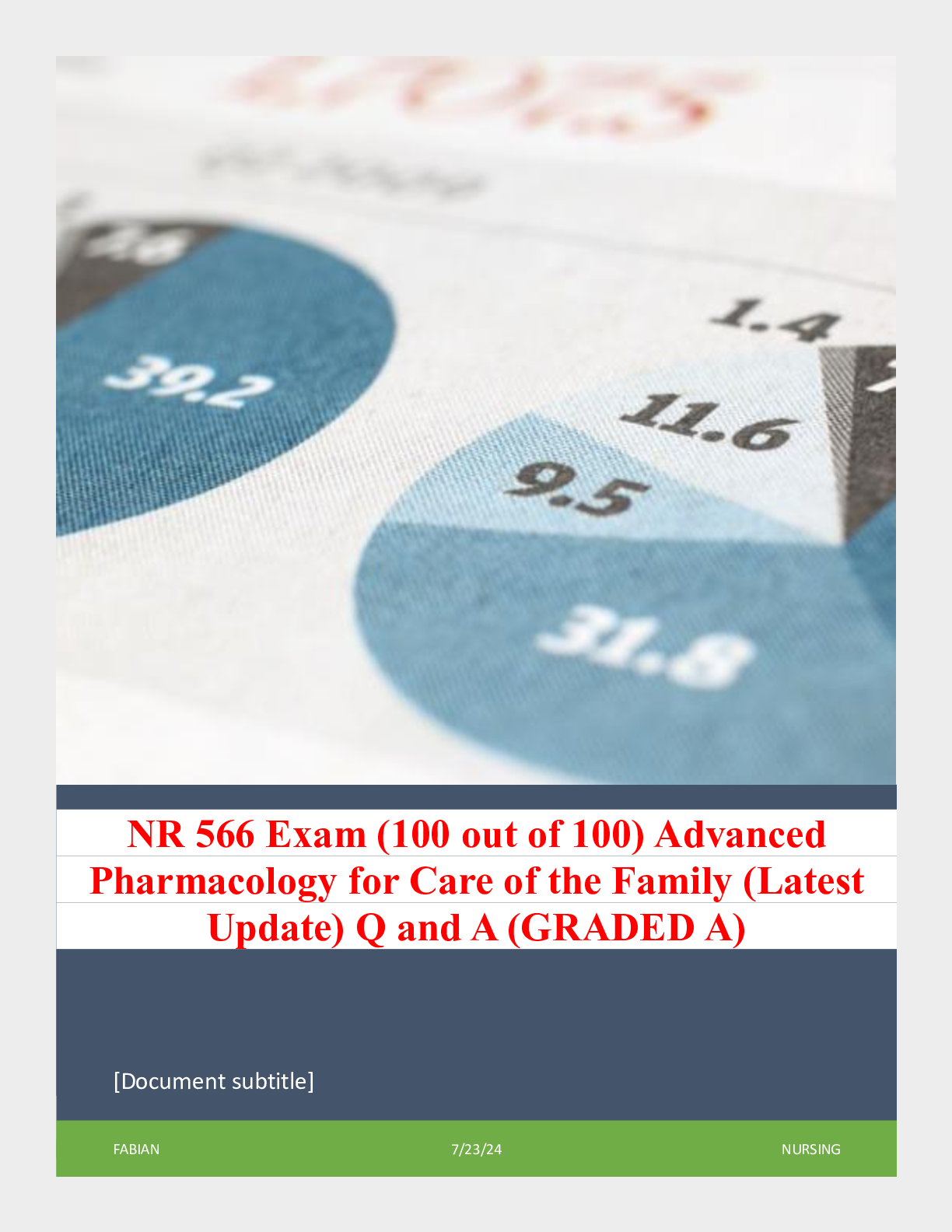

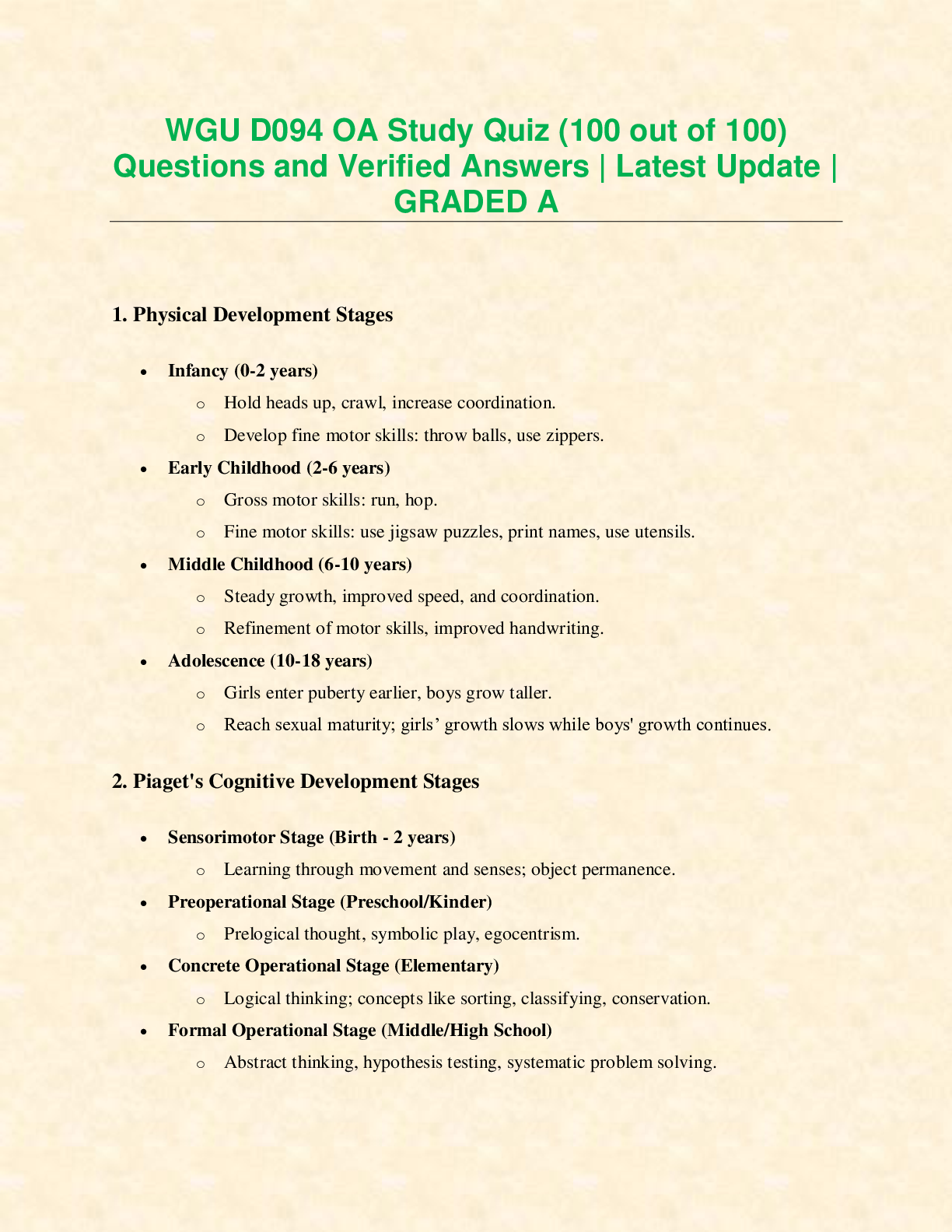
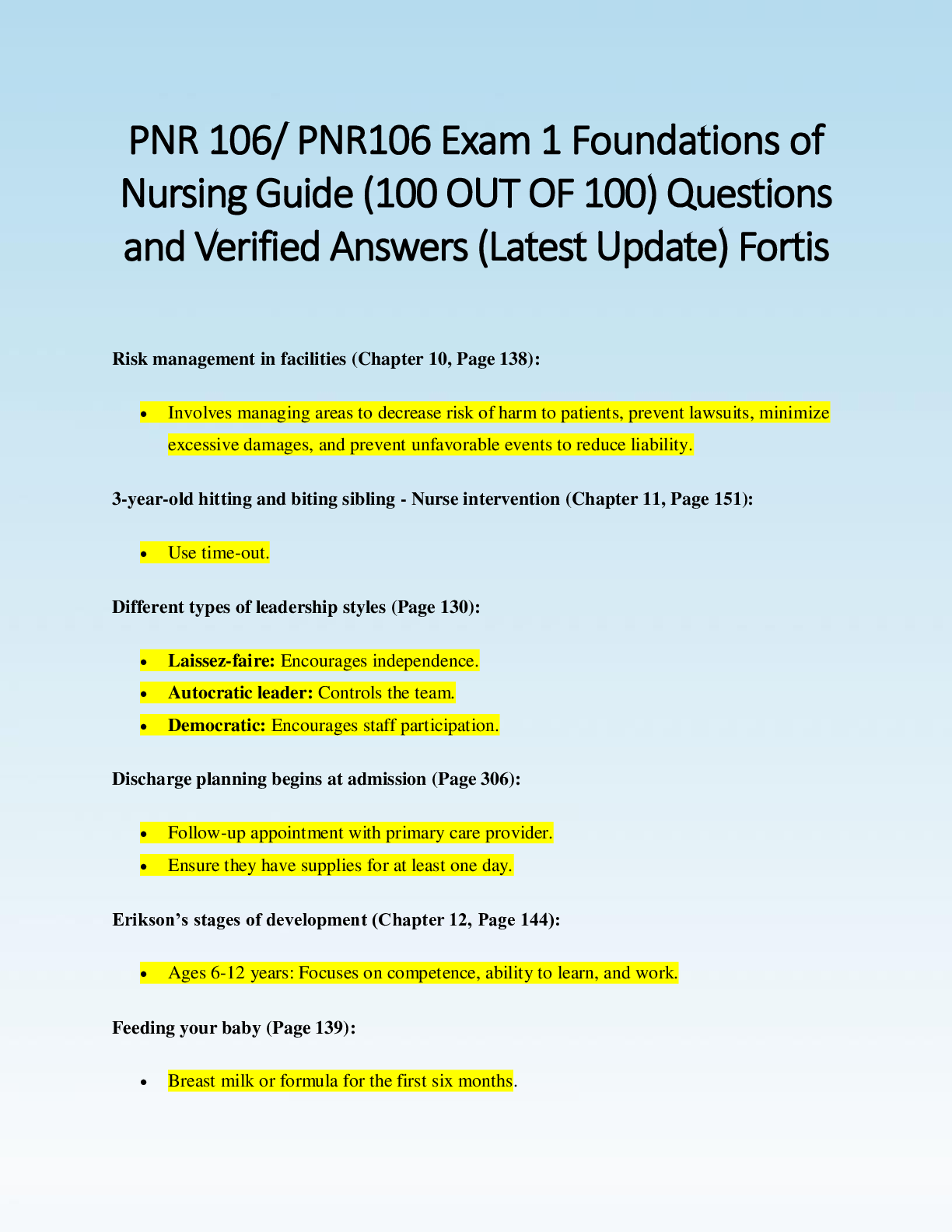
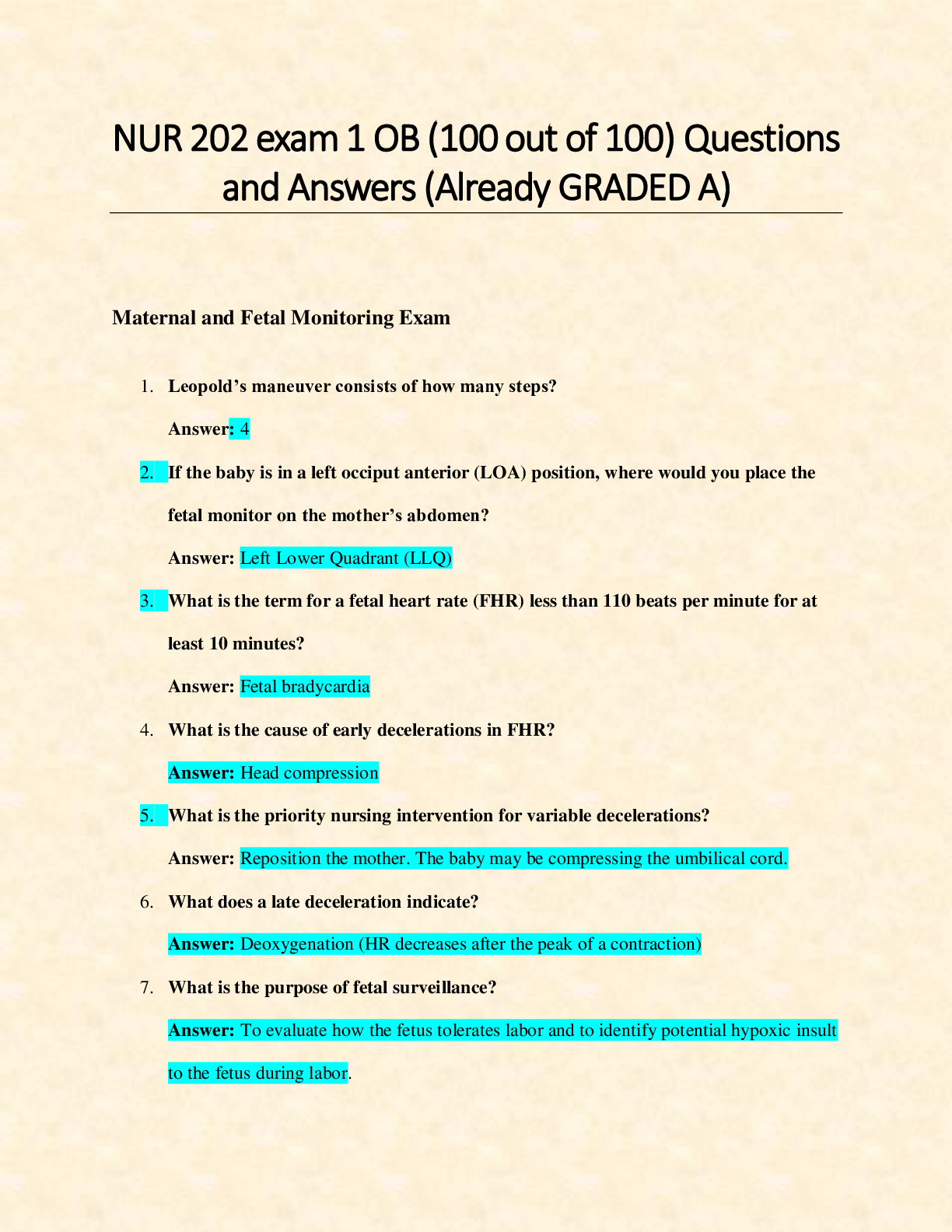
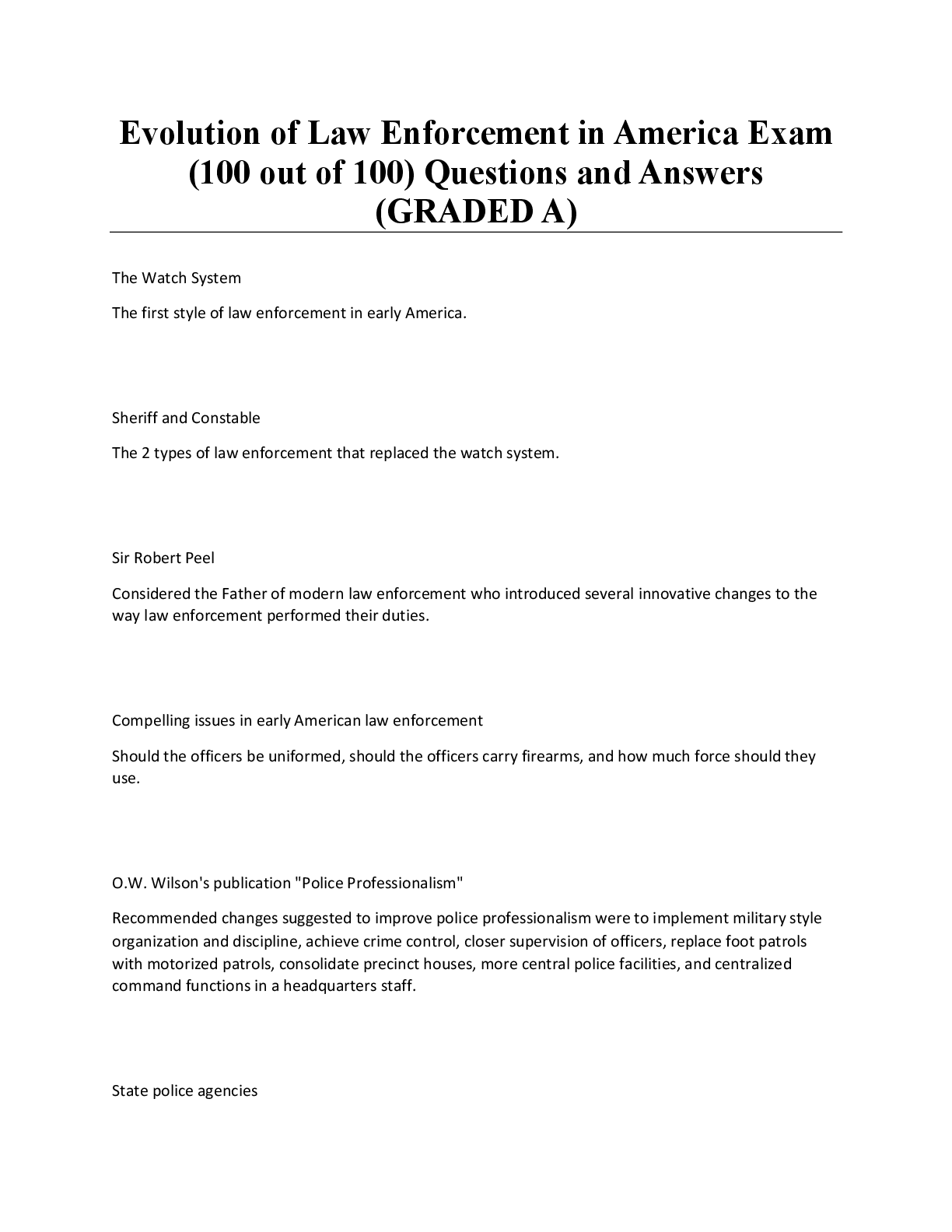
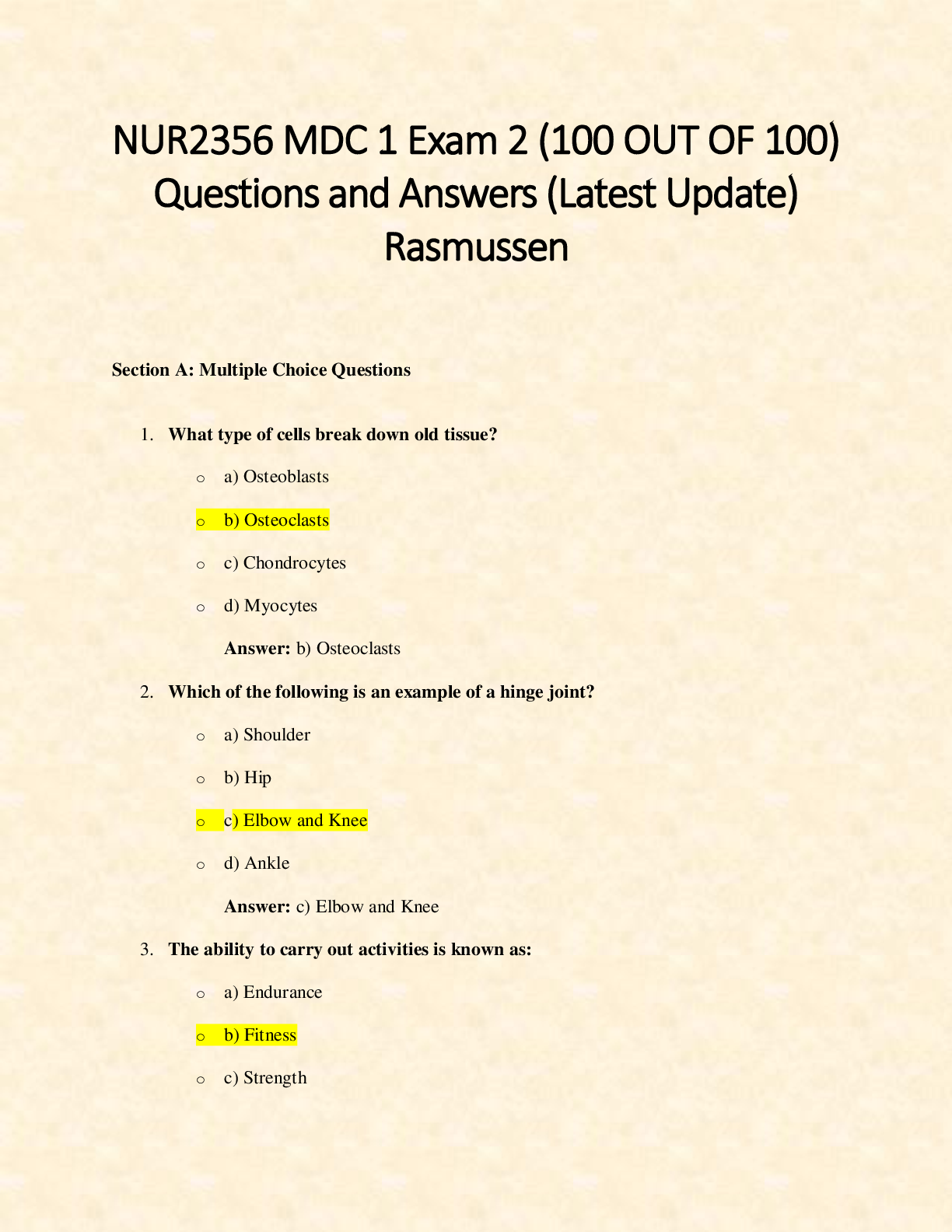
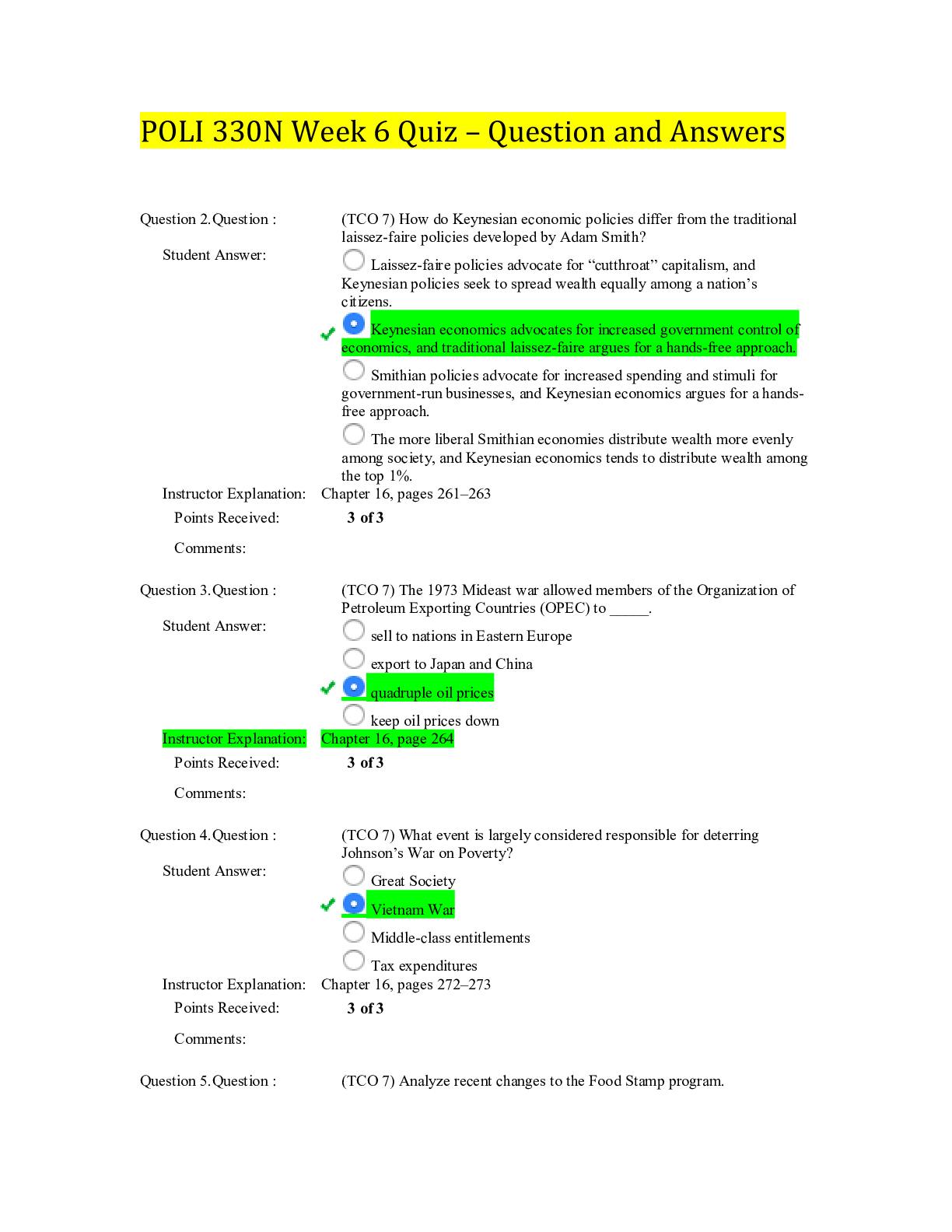

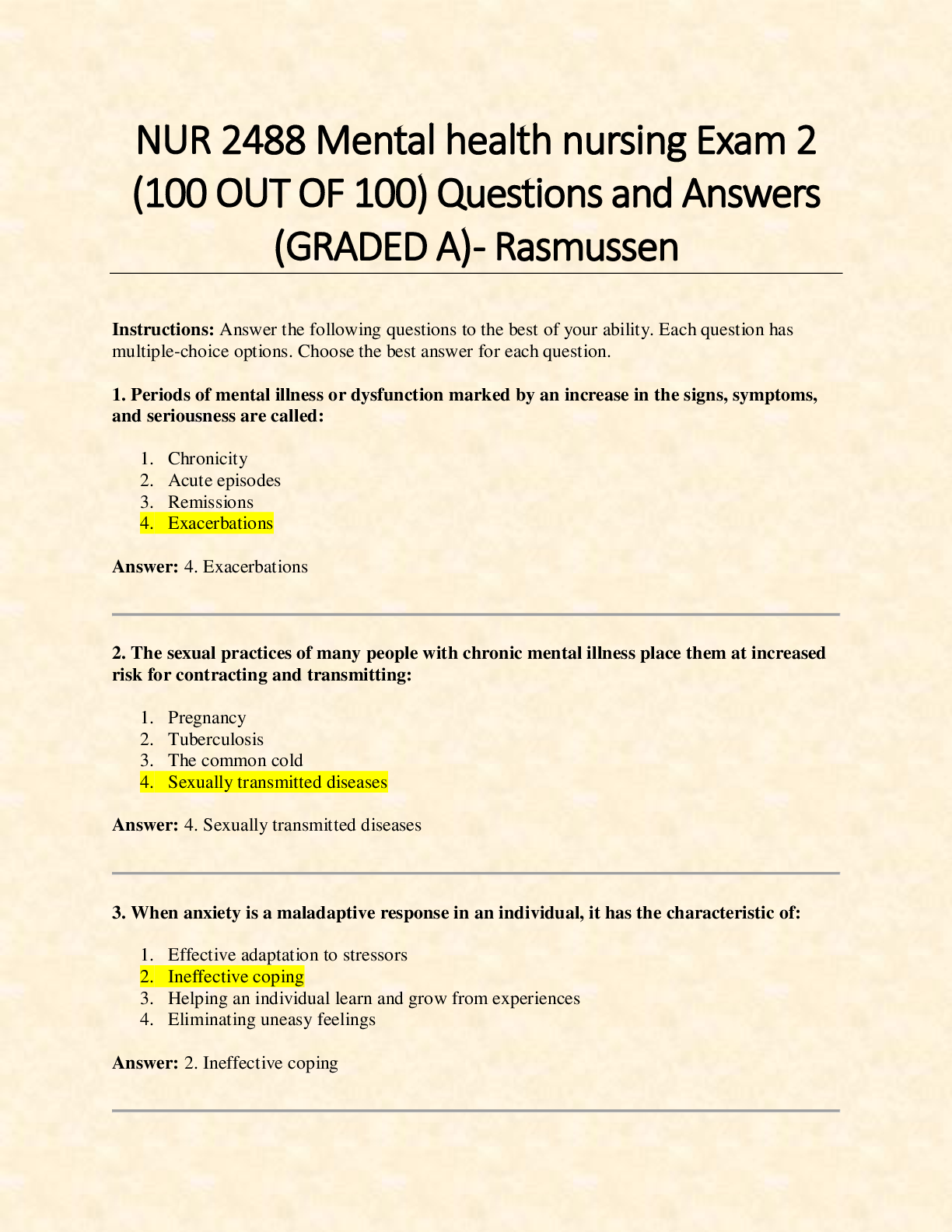

.png)

